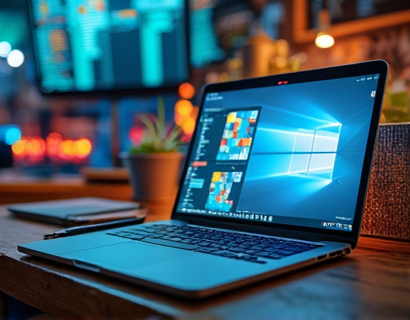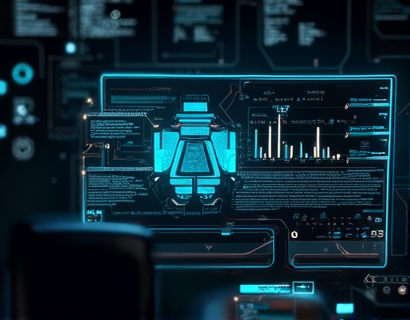Decentralized File Management: Revolutionizing Business Collaboration
In the digital age, efficient and secure file management has become a cornerstone for business collaboration and productivity. Traditional centralized file management systems often face challenges such as single points of failure, security vulnerabilities, and inefficiencies in access control. An innovative approach to addressing these issues is the adoption of decentralized file management solutions. This article delves into how a decentralized online platform can streamline business collaboration, ensuring both security and efficiency in file management.
Understanding Decentralized File Management
Decentralized file management refers to a system where data is not stored in a single central location but is distributed across multiple nodes in a network. This approach leverages blockchain technology and peer-to-peer networking to create a robust and resilient file management system. Unlike traditional centralized systems, decentralized platforms eliminate the risk of a single point of failure, as data is replicated across various nodes, ensuring high availability and reliability.
The core principle of decentralization is to distribute control and ownership of data among participants in the network. This not only enhances security by reducing the risk of data breaches but also improves access speed and efficiency. Each participant in the network has a copy of the data or a portion of it, which can be accessed directly without the need to rely on a central server. This distributed architecture is the foundation of a more secure and efficient file management system.
Enhancing Security Through Decentralization
Security is a paramount concern for businesses handling sensitive information. Decentralized file management platforms address this by implementing advanced cryptographic techniques and consensus mechanisms. Data is encrypted both in transit and at rest, ensuring that even if a node is compromised, the data remains secure. Additionally, access control is managed through decentralized identity verification, where users are authenticated using public-key infrastructure (PKI) rather than centralized credentials.
Another significant security feature is the immutability of data. Once a file is stored on the network, it cannot be altered or deleted without the consensus of the network participants. This ensures the integrity of the data and provides a tamper-proof record. Furthermore, decentralized platforms often employ sharding and partitioning techniques to distribute data across multiple nodes, making it extremely difficult for malicious actors to gain unauthorized access to the entire dataset.
Improving Efficiency and Collaboration
Efficiency in file management is crucial for teams that rely on seamless collaboration. Decentralized platforms offer a user-friendly interface that simplifies the process of organizing, sharing, and accessing files. The intuitive design allows team members to upload, download, and edit files in real-time, regardless of their location. This real-time collaboration eliminates the delays and bottlenecks associated with traditional file-sharing methods.
The decentralized nature of these platforms also means that files are always available, even if some nodes go offline. This redundancy ensures continuous access to critical information, which is particularly beneficial for remote teams and businesses with global operations. Moreover, the distributed storage reduces the load on any single server, leading to faster file retrieval and improved overall performance.
User-Friendly Interface for Seamless Organization
A key advantage of decentralized file management platforms is their user-friendly interface, which is designed to enhance productivity and streamline workflows. These platforms provide a clean and intuitive dashboard where users can easily navigate and manage their files. The interface supports hierarchical folder structures, tagging, and metadata tagging, allowing for precise organization and quick retrieval of files.
Search functionality is another critical feature, enabling users to find files based on various criteria such as name, date, and content. Advanced search algorithms and indexing techniques ensure that searches are fast and accurate, even in large datasets. Additionally, version control is built into the platform, allowing users to track changes, revert to previous versions, and collaborate on document editing without the risk of overwriting each other's work.
Scalability and Flexibility
Decentralized file management platforms are highly scalable, capable of handling large volumes of data and a growing number of users without compromising performance. The distributed architecture allows for easy scaling by adding more nodes to the network as needed. This scalability is particularly beneficial for businesses that experience rapid growth or fluctuating data storage requirements.
Flexibility is another hallmark of decentralized platforms. They support a wide range of file types and formats, making them suitable for various industries and use cases. Whether it's documents, images, videos, or complex data sets, these platforms can accommodate diverse file needs. Moreover, the open nature of decentralized systems allows for integration with other tools and services, enhancing the overall functionality and adaptability of the platform.
Case Studies and Real-World Applications
Several businesses and organizations have successfully implemented decentralized file management solutions, reaping the benefits of enhanced security and efficiency. For instance, a global software development team used a decentralized platform to collaborate on a large-scale project. The platform's real-time collaboration features and version control system significantly reduced development time and improved code quality. The team reported a 30% increase in productivity and a marked reduction in errors.
Another example is a financial services firm that adopted a decentralized file management system to secure sensitive client data. The platform's encryption and access control mechanisms ensured compliance with regulatory standards while providing seamless access to authorized personnel. The firm experienced a 40% reduction in data breach incidents and a significant improvement in data retrieval times.
Challenges and Considerations
While the benefits of decentralized file management are clear, there are several challenges and considerations that businesses should be aware of. One of the primary concerns is the initial setup and migration of existing data to a decentralized system. This process can be complex and time-consuming, requiring careful planning and expertise.
Another consideration is the need for user education and training. Since decentralized platforms operate differently from traditional systems, users must be familiar with the new workflows and features. Providing comprehensive training and support is essential to ensure a smooth transition and maximize the platform's potential.
Network latency can also be a factor, especially for users located in different geographical regions. However, advancements in peer-to-peer networking and content delivery networks (CDNs) are continually addressing this issue, improving the overall user experience.
Future Trends and Innovations
The landscape of decentralized file management is rapidly evolving, with ongoing innovations set to further enhance its capabilities. One promising development is the integration of artificial intelligence (AI) and machine learning (ML) to optimize data management and security. AI-driven analytics can help identify patterns and anomalies, enhancing threat detection and response times.
Another area of innovation is the incorporation of Web3 technologies, such as decentralized applications (dApps) and non-fungible tokens (NFTs), to create more interactive and secure file management experiences. These technologies can enable new use cases, such as tokenized access rights and decentralized marketplaces for file sharing and monetization.
Furthermore, the convergence of decentralized file management with the Internet of Things (IoT) and edge computing is opening up new possibilities for real-time data processing and storage. This integration can lead to more efficient and responsive systems, particularly in industries like manufacturing and healthcare.
Conclusion
Decentralized file management represents a transformative shift in how businesses approach collaboration and data security. By leveraging the power of distributed networks and advanced cryptographic techniques, these platforms offer a secure, efficient, and user-friendly solution for modern file management needs. As the technology continues to mature and integrate with emerging trends, the potential for enhancing business operations and productivity is immense. Embracing decentralized file management is not just a choice but a strategic move towards a more resilient and connected future.











































